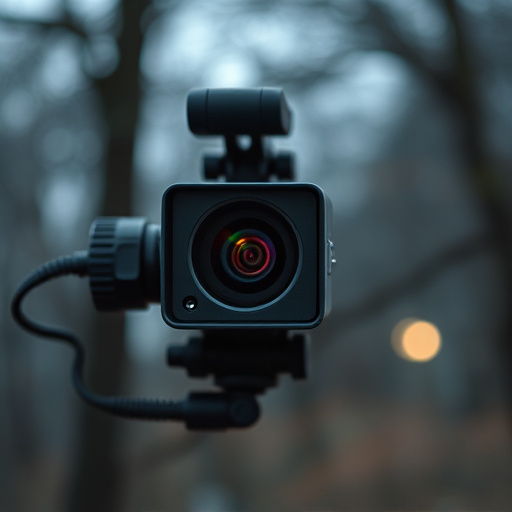Convincing decoy cameras enhance business security by mimicking real surveillance equipment while acting as deterrents. Strategically placed in obvious yet subtle locations, these fake cameras prevent criminals from identifying active cameras. Businesses must follow ethical and legal guidelines, like the VSPA, through transparent communication. Integrating decoys with genuine cameras and robust network security measures bolsters protection without compromising privacy rights.
In today’s digital era, business surveillance has evolved from simple CCTV to sophisticated covert camera networks. This comprehensive guide delves into the best practices for installing such systems, focusing on understanding unique business needs, strategically placing convincing decoy cameras, navigating ethical and legal frameworks, and ensuring network security and reliability. Discover how these practices can transform your business’s safety and deter potential threats.
- Understanding Business Surveillance Needs
- Decoy Camera Placement Strategies
- Ethical Considerations and Legal Frameworks
- Maintaining Network Security and Reliability
Understanding Business Surveillance Needs
Business surveillance requirements vary greatly depending on the industry, location, and specific operational needs. Understanding these needs is the first step in implementing an effective covert camera network. For example, a retail store might prioritize foot traffic monitoring and customer behavior analysis, while a secure facility may focus on access control and intrusion detection.
One strategy to enhance surveillance effectiveness is the strategic use of convincing decoy cameras. These mimic real security devices but serve as deterrents, making it difficult for potential perpetrators to identify active cameras. By combining such decoys with genuine camera installations, businesses can create an environment that discourages unwanted activities while ensuring comprehensive coverage.
Decoy Camera Placement Strategies
To implement convincing decoy camera placement strategies, businesses should think like a criminal. Place the fake cameras in obvious yet strategically subtle locations, mimicking real security setup while remaining undetectable. This can include mounting them high on walls or ceilings where they’re less likely to be noticed but still provide a deterrent. Alternatively, use highly realistic replica cameras that blend seamlessly into the environment.
In addition to physical placement, consider the camera’s field of view and angle. Pointing them towards less critical areas or blind spots in the room can make them more convincing while ensuring they capture genuine activity when needed. Regularly rotate or change their positions to maintain their effectiveness, making it harder for potential intruders to anticipate the real security setup.
Ethical Considerations and Legal Frameworks
When considering a covert camera network installation, it’s crucial to navigate the ethical and legal landscapes surrounding surveillance technology. The use of hidden cameras in businesses raises privacy concerns, making it essential to implement measures that protect sensitive information while adhering to legal frameworks. One effective strategy is the strategic placement of convincing decoy cameras, which serve as visual deterrents without compromising actual monitoring capabilities.
Business owners should familiarize themselves with local and federal laws regarding surveillance, such as the Video Surveillance Privacy Act (VSPA) in the US or similar regulations in other jurisdictions. Additionally, transparent communication with employees and customers about the presence of surveillance systems can foster trust and mitigate potential legal issues. This balanced approach ensures effective security while respecting individual privacy rights.
Maintaining Network Security and Reliability
To maintain network security and reliability after installing a covert camera network, businesses should integrate convincing decoy cameras as part of their overall strategy. These decoys serve as critical redundancies, misdirecting potential thieves or vandals while ensuring genuine surveillance equipment functions optimally. By strategically placing lifelike mimicry cameras that look identical to real ones but lack recording capabilities, businesses can significantly reduce the risk of tampering or theft.
Additionally, robust network architecture and encryption protocols are essential for securing video streams and sensitive data. Regular system updates, strong access controls, and monitoring for unauthorized access help maintain the integrity of the covert network. This comprehensive approach ensures that the camera network remains reliable, providing continuous protection without compromising security measures.
When implementing a covert camera network, it’s essential to balance security needs with ethical considerations. By understanding your business’s unique surveillance requirements, strategically placing convincing decoy cameras, and adhering to legal frameworks, you can enhance security while respecting privacy. Regular maintenance of network security and reliability ensures the system remains effective and trustworthy. Incorporating these best practices allows for a robust and ethically sound surveillance solution tailored to your business needs.
